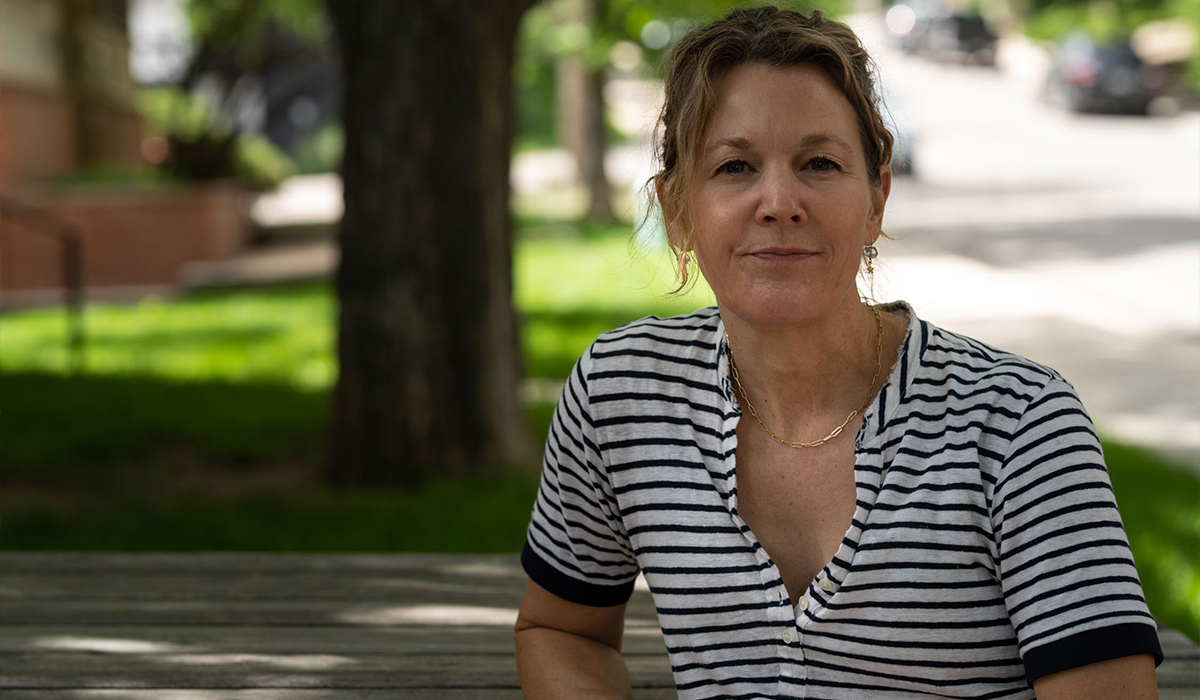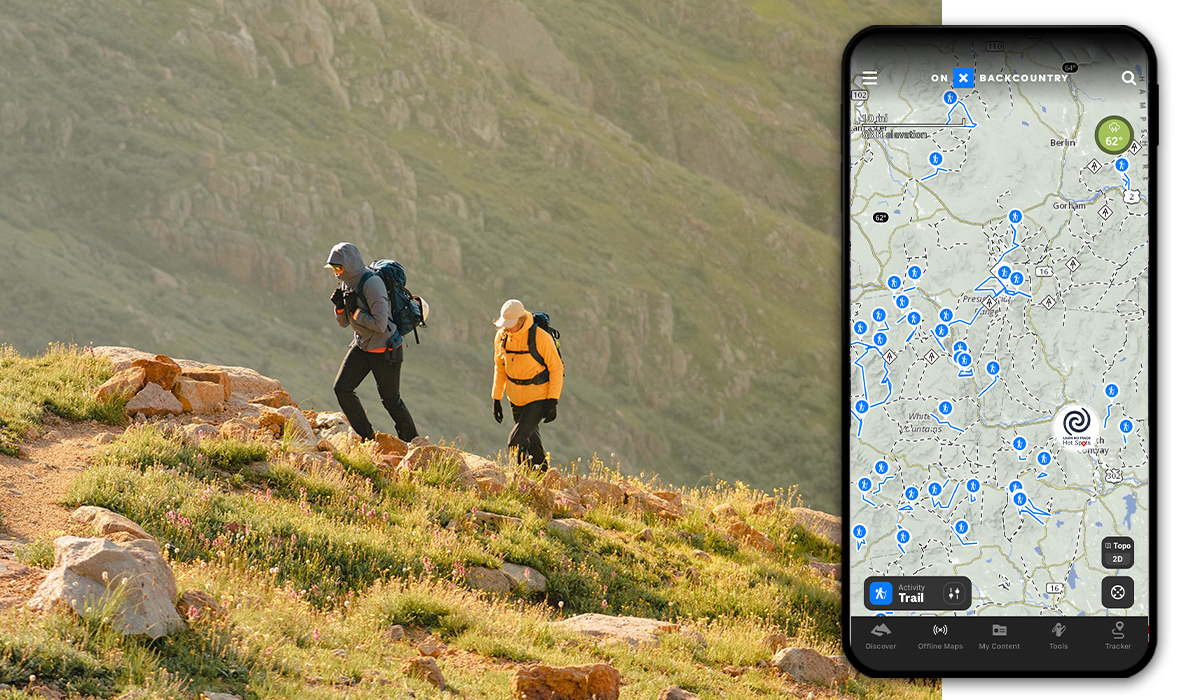Life on the Trail: Leave No Trace’s Dana Watts
The slanted russet Flatirons soar behind Dana Watts as she works and plays in Boulder, Colorado. The mountain peaks are a constant presence, an iconic feature nestled against the foothills, unmistakable as she bikes to work at the Leave No Trace Center for Outdoor Ethics or watches one of her three kids play soccer on the local field.
Watts has lived in Boulder for 27 years, 22 of which as the executive director of the Leave No Trace Center. She never planned on staying with one organization for so long. “Never in a million years would I have said yeah, I’m going to pretty much dedicate my entire career to this,” she said. But the organization’s mission—ensuring a sustainable future for the outdoors and the planet through science, education and stewardship—continues to inspire her daily. “It’s the type of message, and really movement now, that has kept me so energized and so interested,” she said. “The message is not only relevant, but maybe more important today than it’s ever been.” The nonprofit has expanded massively under Watts’ tenure, from two employees to 22.
Watts grew up south of Denver but started her professional career at a public affairs firm in Washington D.C. Moving back to Colorado in 1994 with her husband, she said, felt like coming home. Like many mountain towns in the West, Boulder’s changed a lot in recent years. “What I still love and what I loved from the beginning is the access to the outdoors,” Watts said. “Just the ease we can find trails and immediately get to spaces that are still very unpopulated and feel more like wilderness.” You can find Watts, an avid hiker and trail runner, exploring these landscapes by foot. The popular Mount Sanitas trail is one of her favorites and dog-friendly to boot. Koozie (yes, like beer) and puppy Bob love to tag along.
“If we really want to make a difference and reach people who are just starting to get outside, or who are weekend warriors, we need to look at reaching them in a different way. It’s meeting people where they are.”
At its core, working at Leave No Trace is “about reaching the public with this message of caring for the outdoors,” Watts said. You’ve likely heard the catchphrase before: Take nothing but pictures, leave nothing but footprints.” But the organization has undergone a significant shift in recent years. It started out geared towards this backcountry-specific wilderness ethic. “It was really for people going on multi-day trips, living in the outdoors, and the decisions they had to make that really made a difference on the environment,” Watts said. Where are you going to sleep? Where are you going to eat? How are you going to deal with wildfire? What are you going to do with your trash?
Early on in Watts’ tenure, the team had a realization: that messaging only reaches, and applies to, a small number of people. “If we really want to make a difference and reach people who are just starting to get outside, or who are weekend warriors, we need to look at reaching them in a different way,” she said. “It’s meeting people where they are.”

Now, front-country and urban environments are included in places where Leave No Trace ethics come in handy too. Principles like “dispose of waste properly” and “leave what you find” can be adapted, and are increasingly relevant, no matter if you’re 20 miles from the nearest logging road or on a boardwalk with thousands of your closest friends, gaping at hot springs in Yellowstone National Park.
Time spent in the hustle and bustle of our nation’s capitol helped Watts understand how recreation varies by location. She used to run down the Rock Creek Parkway to monuments like the Lincoln Memorial as a way of getting fresh air. “There was amazing nature to find in the city, but you had to look for it a little bit,” she said. “And more often than not, you’re going to be with other people. You have to learn to share a lot more readily.” Out West, it’s a different story. Expansive landscapes are common. And while some are packed with people—national parks have recorded record visitation in recent years—there are many public lands without a soul in sight.
Recent newcomers on the outdoor recreation scene, like social media and the COVID-19 pandemic, have only heightened what Watts sees as the need for Leave No Trace in all environments. It’s no secret that platforms like Instagram and Facebook can heavily promote specific outdoor locations and result in significant resource impacts as a result. In 2018, Leave No Trace published its first social media guidelines. They encourage people to think before they geotag, be mindful of what their images portray (what might your pictures encourage other people to do, good or bad?), and not use platforms for shaming. While Watts described social media as a “moving target,” she feels strongly that it can be used for good. “People can share different tips and education,” she said.
In the early days of lockdown, people stuck closer to home—discovering local trail systems and finding pockets of refuge in nature amidst uncertainty. Nature could be anything, from sitting on a balcony to picnicking or birdwatching in a neighborhood park. Once restrictions lifted and comfort levels with travel bounced back, people flocked outside like never before. “I think that’s a trend that is not going away, nor should it,” Watts said. “We want people to be outside. I think we’re all better and happier and healthier when we’re connecting to nature.” Today, Leave No Trace works with state and local tourism departments to get sustainable visitation tips and tricks out to people before they get to their final destination.

With more people recreating than ever before, Watts sees the need for Leave No Trace to be more diverse and inclusive. She frequently thinks about what her organization’s message means for people who haven’t traditionally gone outside, as well as how they can feel welcomed and included on public lands. “Those are the things we’re looking at internally here,” she said. “How are we messaging? Are we as inclusive as we need to be? Are we providing information that makes people feel like they can, and they should, go outside and that they’re going to feel welcome there?” As executive director, that can take many shapes including increasing staff and board member diversity, as well as partnering with groups like Outward Bound Adventures, Black Folks Camp Too, Latino Outdoors, and Outdoor Afro to help reach new audiences.
Philosophically, she said, Leave No Trace is about caring for the land, being respectful of the land, the wildfire, and other visitors. It’s also about people. “It’s the action people have to protect the outdoors,” Watts said. “So it’s very personal. And it’s very empowering. The beauty of that is one of the reasons I’m still here. It’s not something off in the distance, something obscure, something that somebody else is doing. It’s something that you can do every time you go outside.”
And there’s no time like the present for an expansive environmental ethic. Climate change-exacerbated events like wildfires and drought will continue to impact outdoor recreation. In New Mexico, an entire national forest was proactively closed to lessen wildfire risk, while popular trails in Washington took years to become accessible again post-wildfire. Last summer, low flows and hot temperatures limited which Montana rivers were fishable. Effects like these could boost visitation pressure elsewhere. “There’s no question that [climate change] has impacted people’s outdoor experience, and will continue to do so,” Watts said.
She remembered a late-summer 2020 trip to visit her daughter in Missoula, Montana. “It was the end of September, so it should have been perfectly beautiful to get outside,” she recalled. But the smoke was so dense, she couldn’t go outside for four days. “I absolutely think the need for Leave No Trace is going to be heightened,” she said. “After almost three decades, it’s never been more important for our changing world.”
Watts’ leadership at the Leave No Trace Center and her personal life out on the trails blend together “almost daily,” she said. Her work often manifests on trails right in front of her. At a Colorado state park trailhead, she noticed missed opportunities for Leave No Trace language on maps. But a spring trip to Moab, Utah left her feeling optimistic. She found Leave No Trace messaging scattered throughout retail stores and signage around town. “It was a phenomenal visit,” Watts said. “The areas that we camped at were in great condition.” It’s a part of Watts’ brain that’s hard to turn off. If she ever stops working at Leave No Trace, she said, it’ll probably be impossible to go out on a trail and not see both areas of improvement and signs of her life’s work.
Photos by Brendan Davis (2) and Bianca Germain.